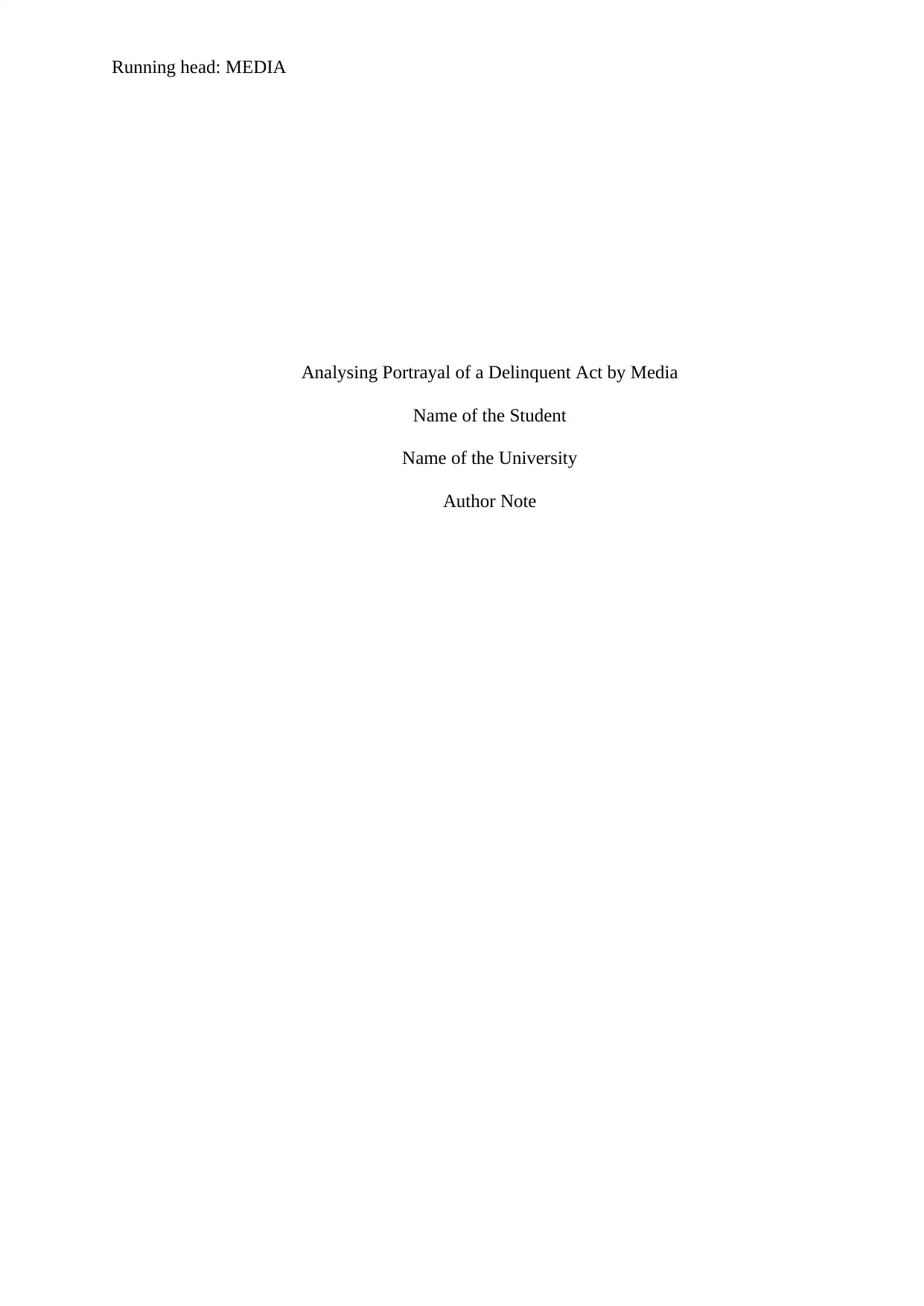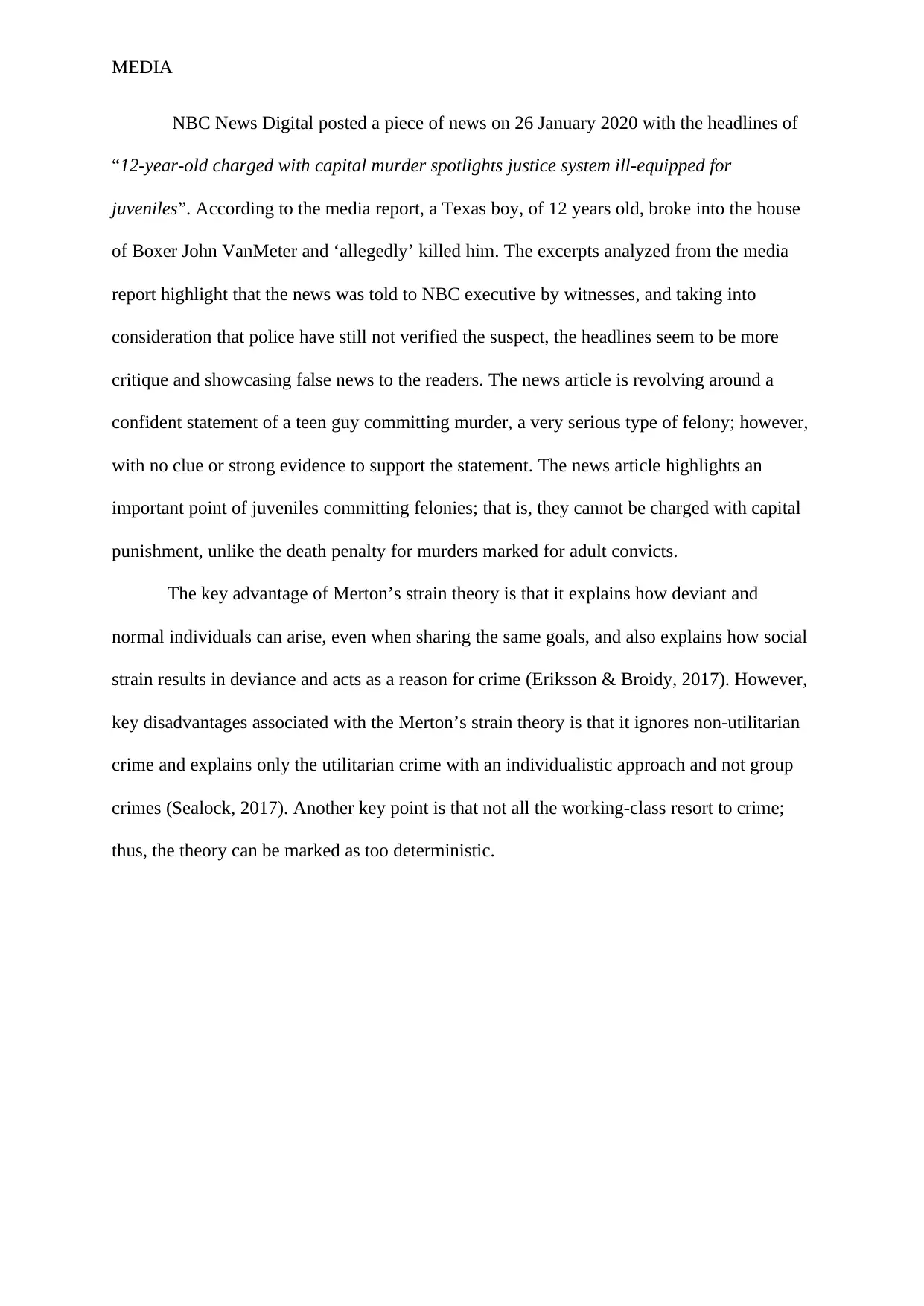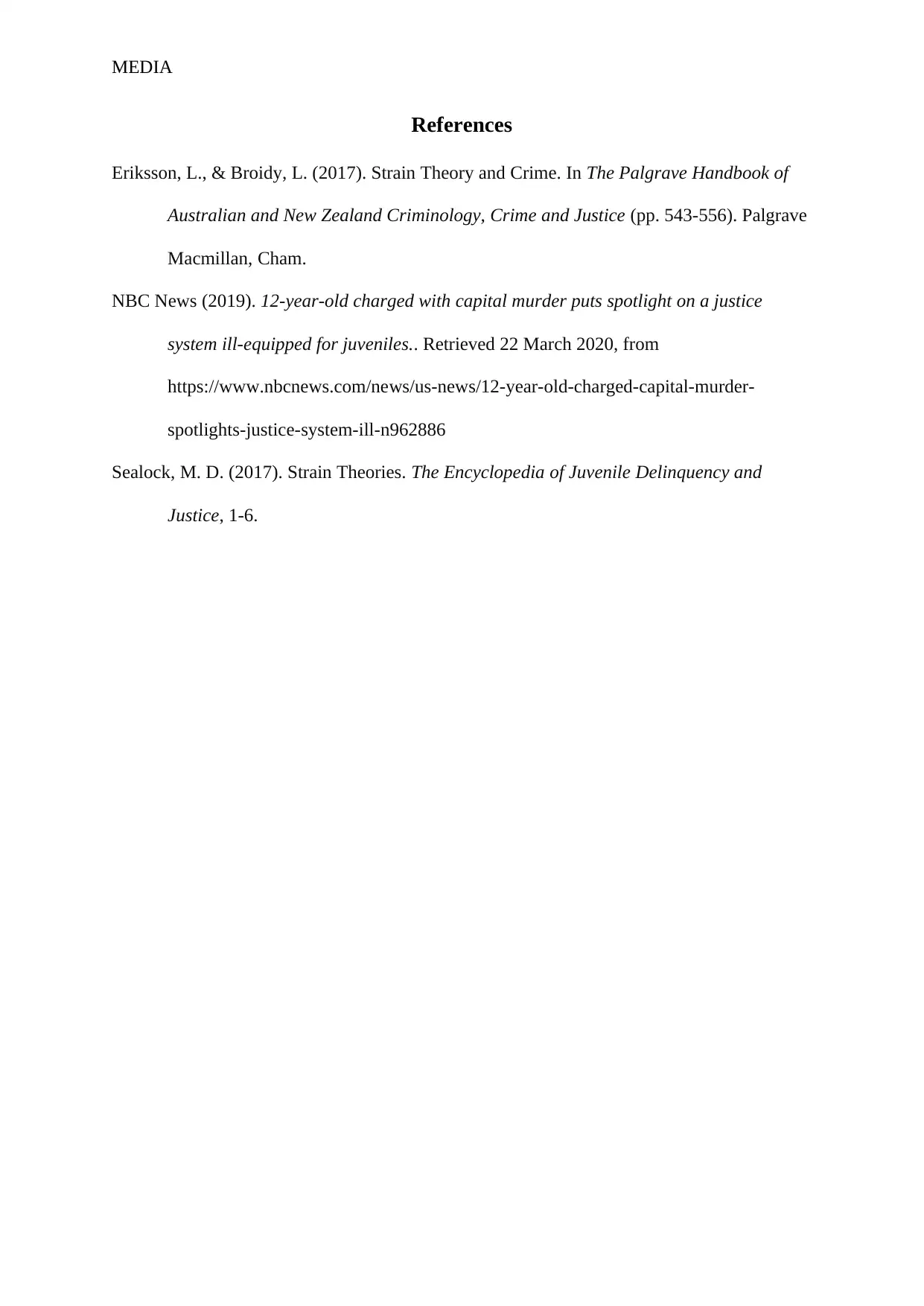Analysis of Media Report: Juvenile Crime, Justice, and Strain Theory
VerifiedAdded on 2022/08/28
|3
|411
|19
Report
AI Summary
The report analyzes a news article from NBC News that discusses a 12-year-old charged with murder and the implications for the juvenile justice system. The article highlights the complexities of prosecuting juveniles and the limitations of the current system. The analysis focuses on the media's portrayal of the event and its potential impact on public perception. The report also incorporates Merton's strain theory to explain the causes of crime and deviance, examining how social strain can lead to criminal behavior, but also acknowledges the limitations of the theory, such as its focus on utilitarian crimes and its individualistic approach. The report concludes with the significance of the news report and its relation to the justice system and the role of media in shaping the perception of juvenile crimes.
1 out of 3




![[object Object]](/_next/static/media/star-bottom.7253800d.svg)